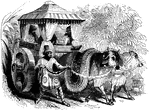
Peruvian Gold Disk
Peruvian gold disk sketched in the American Museum of Natural History in New York.

Peruvian Fabric Design
Peruvian fabric design sketched in the American Museum of Natural History in New York.
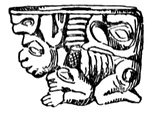
Mexican Pipe Bowl
Mexican stone pipe bowl sketched in the American Museum of Natural History in New York.
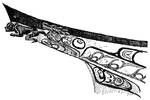
Alaskan War Canoe
Prow of an Alaskan war canoe sketched in the American Museum of Natural History in New York.

Alaskan War Canoe
Stern of an Alaskan war canoe sketched in the American Museum of Natural History in New York.

Mexican (Tusayan) Jar
Tusayan jar (Mexico) sketched in the American Museum of Natural History in New York.
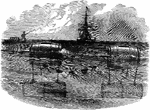
Infernal machine
"Infernal machine designed by the Confederates to destroy the Federal Flotilla in the Potomac discovered…
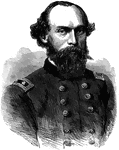
General Gordon Granger
"General Granger, born in New York, in 1821, died in Santa Fe, N. M., January 10th, 1876, was graduated…

Engagement at Romney
"Engagement at Romney, VA., twenty miles from New Creek, Tuesday, June 11th, 1861- the Eleventh Indiana…

Battle of Pea Ridge
"Battle of Pea Ridge, Ark., fought March 6th, 7th and 8th, 1862, between the Federal forces, 13,000…
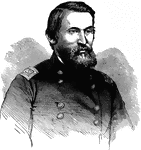
General George Crook
"General Crook, born near Dayton, O., September 8th, 1828, died in Chicago, Ill., March 21st, 1890,…

Strasburg Woods
"In the Shenandoah Valley- General Fremont's division marching through the woods to attack the Confederates.…
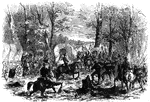
Lick Creek Bottom
"Advance of Federal troops on Corinth- the Carnival of Mud- scene at Lick Creek Bottom, between Pittsburg…

Creek Railroad Bridge
"Burning of the gunpowder Creek Railroad Bridge, on the Philadelphia and Baltimore Railroad, by the…

Battle of Savages Station
"Battle of Savages Station. Brigadier General Smith's division hotly engaged with the enemy, at noon,…
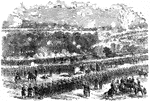
Battle of Malvern Hill
"Battle of Malvern Hill, near Turkey Bend, James River, Va., fought Tuesday, July 1st, 1862. The battle…

Port Royal Ferry
"Successful attack of a detachment of the Federal forces, under General Stevens, supported by four gunboats…

Village of Clarksburg
"Village of Clarksburg, Western Virginia, headquarters of General Rosecrans. Clarksburg, a post village,…

Battle of White Oak Swamp Bridge
"Battle of White Oak Swamp Bridge, Monday June 30th, 1862- Ayres's, Mott's and Randall's batteries checking…

Cavalry of General Banks
"A reconnoitring detachment of General Banks's cavalry, Hyattstown, Md., in the distance. There are…
Gunboat engagement
"Engagement between the United States gunboats, commanded by Commodore Davis, and the Confederate Mosquito…

Delaware Indians
"Delaware Indians acting as scouts for the Federal army in the West. General Fremont, on taking command…
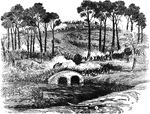
Battle of Antietam
"Battle of Antietam, Md. Burnside's division carrying the bridge over the Antietam Creek and storming…
Confederates
"Confederates in ambush firing on a reconnoitring expedition to Oyster Creek, Roanoke Island, N.C."—…

Fort Thompson
"Bombardment and capture of Fort Thompson, thirteen guns, near New Berne, on the Neuse River, by the…

Paducah, Kentucky
"View of the town of Paducah, Ky., at the confluence of the rivers Ohio and Tennessee, the Northern…

Confederate Schooner
"Bird's-eye view of the burning of a Confederate schooner in Quantico or Dumfries Creek, Potomac River,…

Encampment of Colonel Max Weber's Rifle Regiment
"Encampment of Colonel Max Weber's German Turner Rifle Regiment, Twentieth New York Volunteers, at Hampton…

Battle of Antietam
"Battle of Antietam, Burnside's Division, left wing- brilliant and decisive bayonet charge of Hawkins's…

Battle of Antietam
"Battle of Antietam- the opening of the fight- Hooker's division fording the Great Antietam Creek to…

Hilton Head
"Exterior view of fortifications erected by the Federal troops at Hilton Head, Port Royal. S. C. Hilton…

Battle of Baker's Creek
"Battle of Baker's Creek, May 16th, 1862- Defeat of the Confederates under Pemberton, by General Grant.…

Port Hudson
"The advance of Port Hudson. The baggage train of General Augur's division crossing the Bayou Montecino,…

Battle of Antietam
"Battle of Antietam. The centre and right wing of General McClellan's Army, commanded by Generals Hooker,…

War Dance
"Camp life in the West. During one of the pauses in the active part of the Missouri campaign our special…

Paris
"Paris, capital of Bourbon County, situated on Stoner Creek, Ky., occupied by Morgan's Guerrillas in…

Pontoon Bridge
"The Pontoon bridge 'On The March'- the pontoon wagons on their way from Aquia Creek to the Rappahannock.…
Falmouth
"The town of Falmouth, Va. on the Rappahannock, opposite Fredericksburg. Headquarters of General Burnside…

Battle of Gettysburg
"Battle of Gettysburg, Thursday evening, July 2nd, 1863, as seen from Rocky Hill, on Meade's left. Our…

Battle of Chickamauga
"Battle of Chickamauga- repulse of the Confederates at Crawfish Creek. We present a most interesting…
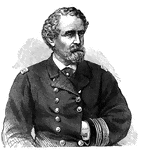
Rear Admiral James Alden
"Rear Admiral Alden, born in Portland, Me., March 31st, 1810, died in San Francisco, Cal., February…

Fort Walker
"View from the interior of Fort Walker, Hilton Head, S. C. looking inland, showing the defenses from…

General Cuvier Grover
"General Grover, born in Bethel, Me., July 24th, 1829, died in Atlantic City, N. J., June 6th, 1885,…
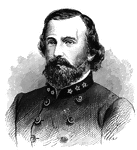
General Richard S. Ewell
"General Ewell, born in Georgetown, D. C., February 8th, 1817, died in Springfield, Tenn., January 25th,…

Buzzard's Roost
"Sherman's Campaign. The capture of Buzzard's Roost at Hovey Gap, Ga., May 8th, 1864. Among the strongholds…
Confederate Army
"The Confederate army, under early, surprising the Federal forces at Cedar Creek, on the morning of…

War in Tennessee
"The war in Tennessee. Capture of Mission Ridge, near Rossville, by General Thomas, November 25th, 1863.…
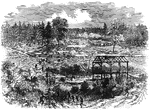
Battle of Hatcher's Creek
"The army of the Potomac- Battle of Hatcher's Creek, Va., October 27th, 1864- the Second Corps, under…

Indian Pangolin
"Its head is small, pointed, and conic; muzzle elongated and narrow; body rather stout; tail short and…
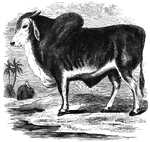
Indian Ox
"It has a long head, short, blunt horns, drooping ears, and a hump on its sholders sometimes weighing…

Indian Ox
"It has a long head, short, blunt horns, drooping ears, and a hump on its sholders sometimes weighing…

Acquia Creek
"The attack upon the batteries at the entrance of Acquia Creek, Potomac River, by the United States…
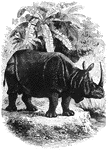
Indian Rhinoceros
"The head and neck are rather short; the eye is small and lateral, and the snimal cannot see in front,…
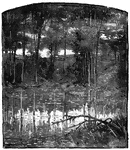
Bloody Pond
"Bloody Pond, near Lake George, which is said to still contain the bones of many of those who fell in…



